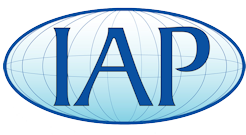I once heard a very wise turner give some advice about turning close to bushings. When you're "close" on diameter, start your approach from the bushing side and go over towards the material you're turning. It makes it very difficult to go under the diameter. It is possible you'll touch the bushing with your tools, you'll want to check them with a caliper occasionally to make sure they're still the correct diameter. If they aren't, they're cheap to replace. This approach may help you.
There are a lot of turners on here who will also say that bushings are a guide and you should pull the bushings once you get close and use a caliper for the last approach to final diameter.
Neither side of that discussion is wrong, just different approaches.
As far as CA glue vs poly, there a lot of approaches out there. You'll find a host of folks who will state their preferred brand and technique. I'd recommend searching the discussion history and read a few discussions. I'm trying to stay "CA agnostic" in that recommendation....
For the sake of honesty, I'll say that I'm in the GluBoost camp but honestly that's really because the guys who've shown me how to turn use it and I've just stayed with it because I've been happy with the results. I've tried a couple friction finishes and just not been in love, I think CA is a better approach for me. I have not tried any of the other brands of CA that people use for finish.
Kent
PS - I came back to add to my comment. Your pen stand in the photos is really cool

